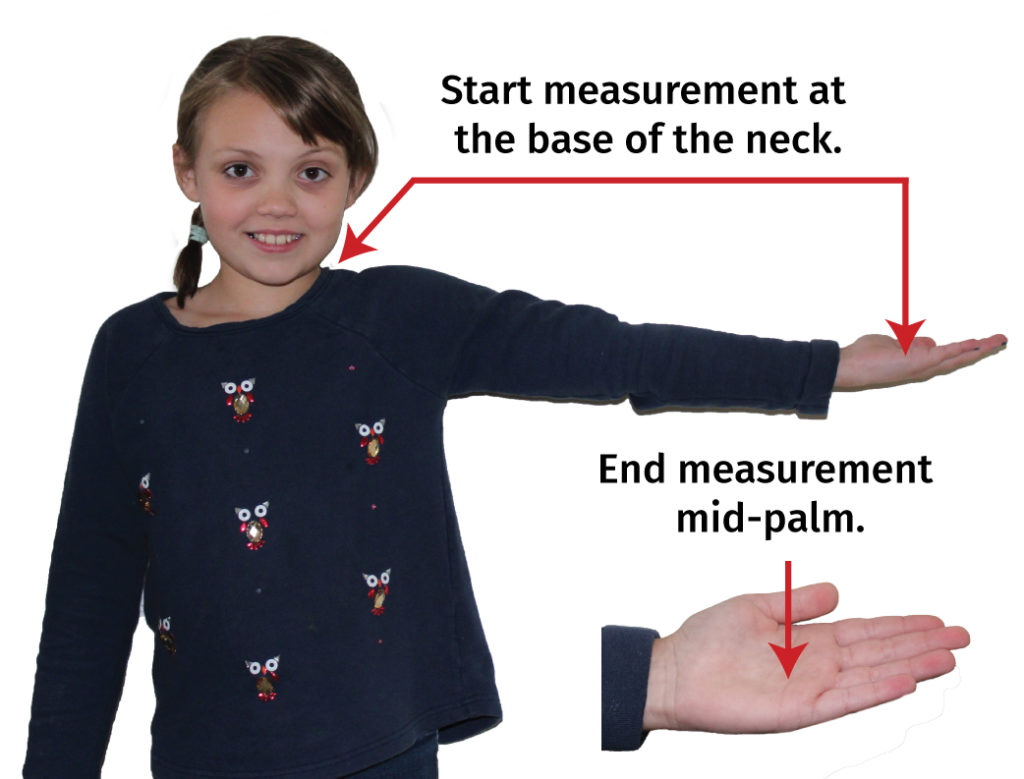Orchestral string instruments are available in different sizes based on the overall size of the player. The correct size instrument is necessary to give the student the best opportunity for success.
To determine the appropriate size instrument for your child, it is best to have the teacher size the student. If you are not able to do this, visit one of our locations to be measured by our team or follow the steps below. You will need a measuring stick or tape measure depending on the instrument.
Violin and Viola Sizing
To size a student for a violin or viola, using a yardstick, measure the number of inches from their neck to the middle of the left-hand palm. The arm must be fully extended and raised perpendicular to the body, just like they would hold a violin. Once you have this measurement, use the guide below to determine the corresponding size violin or viola. As a general rule, if the measurement suggests that your student is between sizes, it’s best to select the smaller size.

Cello and Bass Sizing
To determine the correct size cello or bass, you will need to know the player’s height. Once you determine the student’s height, then refer to the size chart below to find the corresponding size cello or string bass.
Violin Sizing
(By Arm Measurement)
23 1/2″ and Up – 4/4 Violin
22 1/4″ – 3/4 Violin
20 1/2″ – 1/2 Violin
18 1/2″ – 1/4 Violin
17″ – 1/8 Violin
15 1/2″ – 1/10 Violin
14 1/4″ and Under – 1/16 Violin
Viola Sizing
(By Arm Measurement)
27 1/4″ and Up – 16.5″ Viola
26 1/2″ – 16″ Viola
25 1/2″ – 15.5″ Viola
25″ – 15″ Viola
23 1/4″ – 14″ Viola
22″ – 13″ Viola
20 1/4″ – 12″ Viola
18 1/4″ and Under – 11″ Viola
Cello Sizing
(By Student’s Height)
62″ and Up – 4/4 Cello
54″ – 62″ – 3/4 Cello
48″ – 54″ – 1/2 Cello
44″ – 48″ – 1/4 Cello
Under 44″ – 1/8 Cello
Bass Sizing
(By Student’s Height)
62″ and Up – 3/4 Bass
54″ – 62″ – 1/2 Bass
48″ – 54″ – 1/4 Bass
48″ and Under – 1/8 Bass